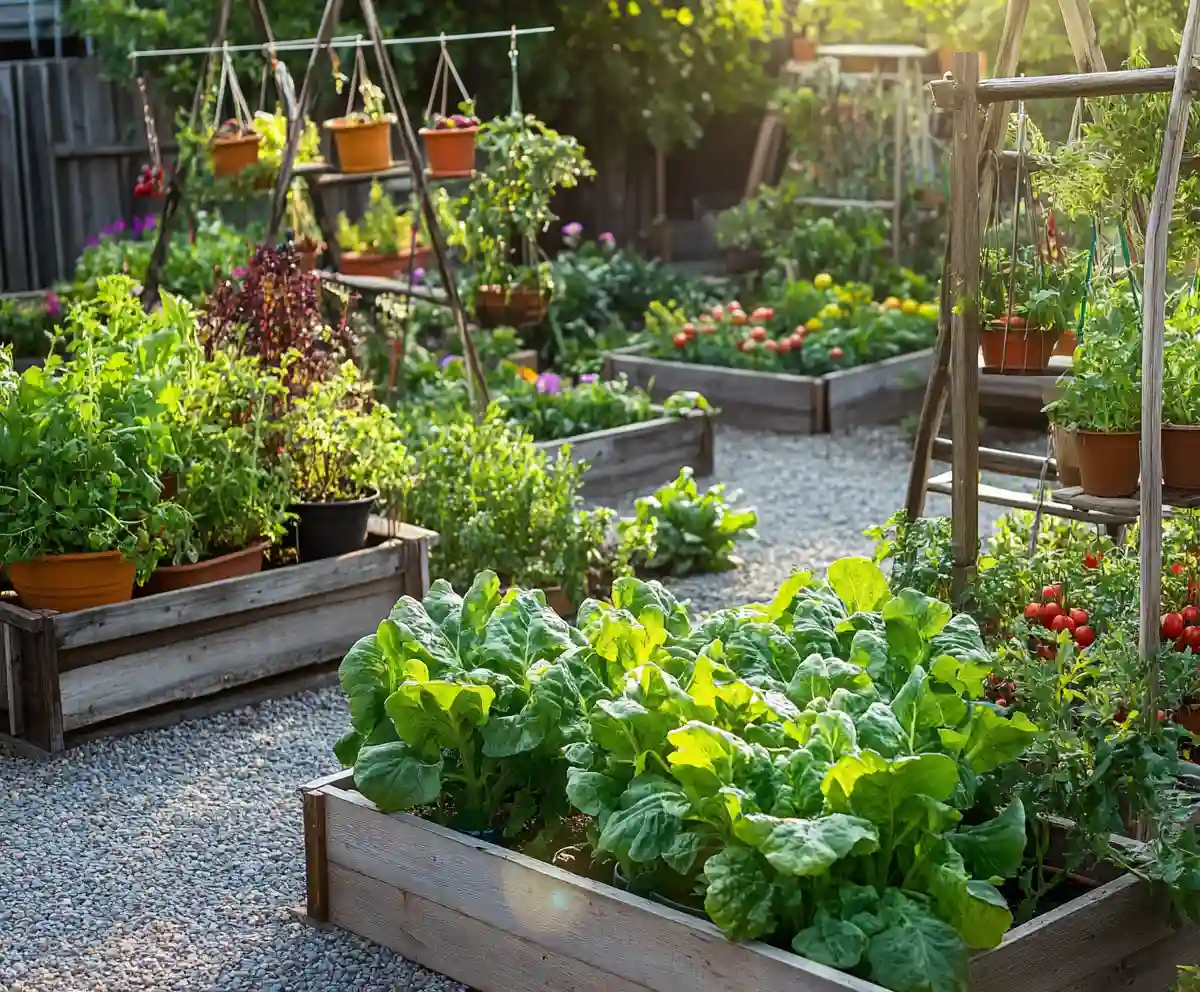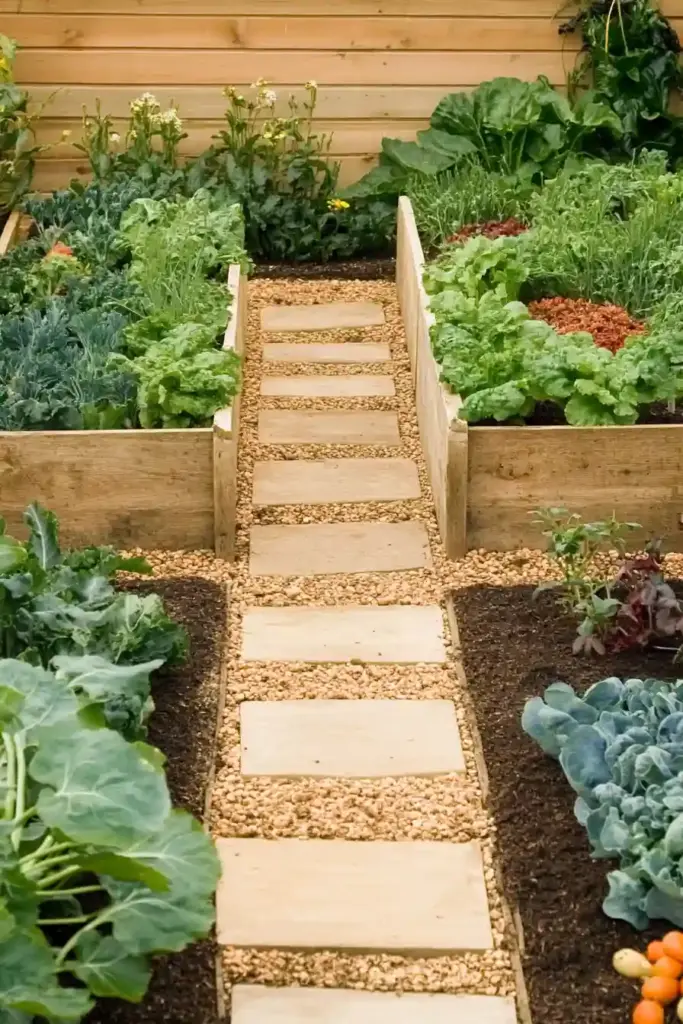Creating a thriving vegetable garden doesn’t require acres of land or a green thumb passed down through generations. With the right vegetable garden layout ideas, you can design a productive, beautiful garden—no matter how much space you’re working with. Whether you have a cozy backyard, a balcony, or just a sunny windowsill, the layout of your garden makes all the difference in how enjoyable and efficient your growing season will be.
In this guide, we’re diving into fresh, creative layouts that are perfect for maximizing space, boosting yields, and making your garden a joy to spend time in. From raised beds to vertical designs and even stylish potagers, these ideas will help you build a garden that’s both functional and beautiful.
🌿 1. Design a French-Inspired Potager Garden
If you’re after charm and function, the potager garden is a timeless classic. Originating from French kitchen gardens, this layout blends vegetables, herbs, and edible flowers in structured, symmetrical beds with decorative paths—often lined with gravel or stepping stones.
Why it works:
- Gravel paths reduce weeds and help with drainage
- Symmetry makes it visually stunning
- Easily integrates beauty with productivity
This is a perfect layout if you want your garden to feel like an extension of your outdoor living space. Think neat rows of kale next to bright nasturtiums and framed by a border of herbs. Très chic📏 2. Try a Square-Foot Gardening System
📏 2. Try a Square-Foot Gardening System
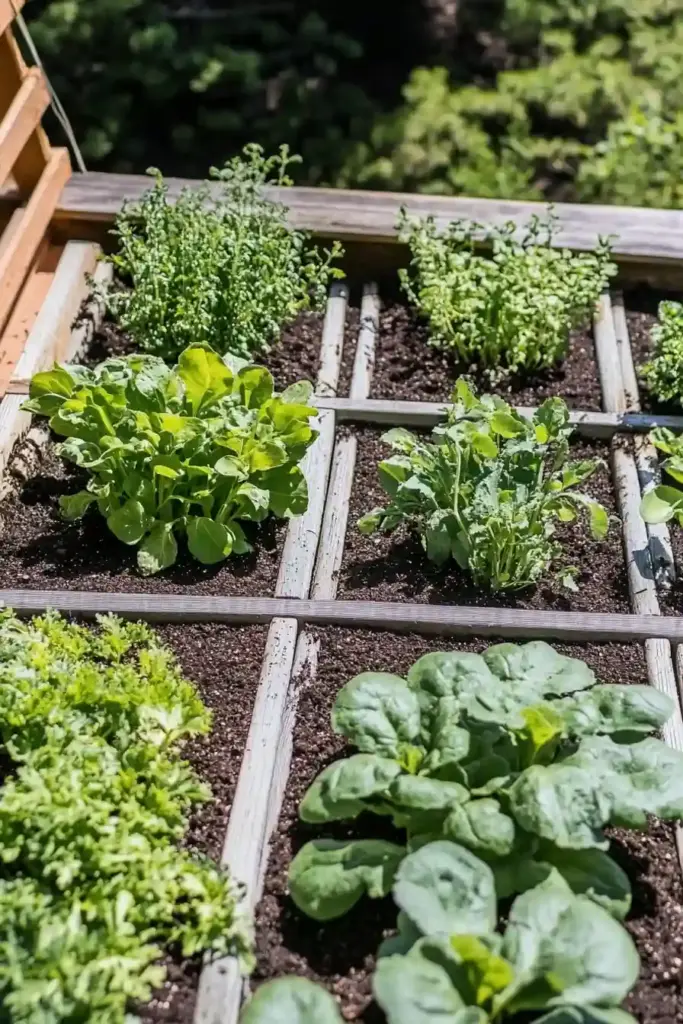
For gardeners working with limited space—or anyone who wants to grow smarter, not harder—the square-foot gardening method is a game-changer. This layout divides a raised bed (typically 4×4 feet) into 16 smaller squares, each dedicated to a specific crop.
Why it works:
- Maximizes small garden areas
- Keeps crops organized and easy to manage
- Ideal for beginners and urban gardeners
Using a simple wooden grid or twine to mark the squares, you can plant densely yet efficiently. Leafy greens, root vegetables, and herbs all thrive in this system. Bonus: crop rotation becomes a breeze!
🎨 3. Use Color to Coordinate Your Garden
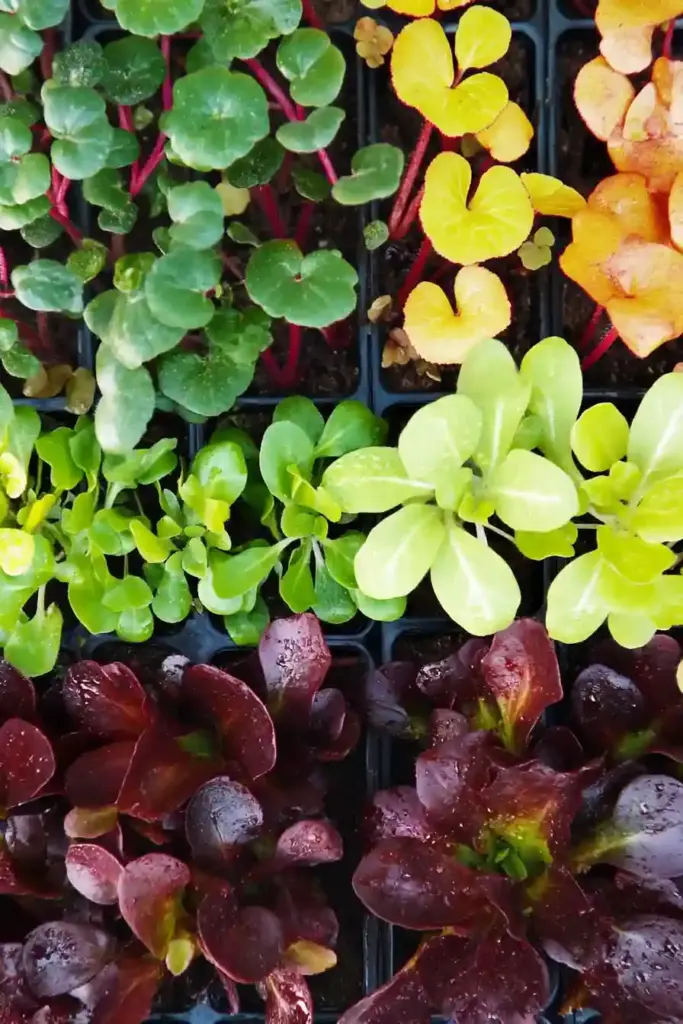
Who says a vegetable garden can’t be a feast for the eyes? Color-coordinating your crops adds visual harmony while making your garden feel intentional and artistic. Whether you go for a bold contrast or a soothing ombré effect, your garden layout will look as good as it tastes.
Tips for success:
- Group vegetables by leaf color (e.g., deep purple kale next to bright green basil)
- Plan for seasonal changes in bloom and foliage
- Pair colors that pop—like golden squash beside red chard
Not only will your garden be Instagram-worthy, but it also helps you spot what’s ready to harvest at a glance.
🍽 4. Create a Functional Kitchen Garden

Imagine stepping just outside your back door to snip fresh basil or pull up a handful of carrots. That’s the magic of a kitchen garden—a compact, thoughtfully planned space that keeps your favorite herbs, greens, and veggies close at hand.
Why it works:
- Convenient harvesting for daily meals
- Encourages replanting throughout the season
- Supports a steady supply of fresh produce
Design this layout near your kitchen or patio and mix quick-growing crops like arugula, scallions, and parsley. Bonus points for adding edible flowers like nasturtiums or calendula to attract pollinators and dress up your dinner plate.
🚧 5. Build a Fenced-In Garden Area

Sometimes, a beautiful garden needs a little protection. A fenced garden layout adds structure to your yard while keeping hungry critters at bay. Whether you’re dealing with rabbits, deer, or curious pets, a simple fence goes a long way.
Key features:
- Use galvanized hardware cloth for burrowers
- Consider hog panels for a rustic, sturdy look
- Add a gate for style and easy access
Beyond practicality, a well-constructed fenced garden also adds a defined focal point to your landscape—turning your growing space into a feature, not just a function.
🪴 6. Go Vertical with Hanging Pots
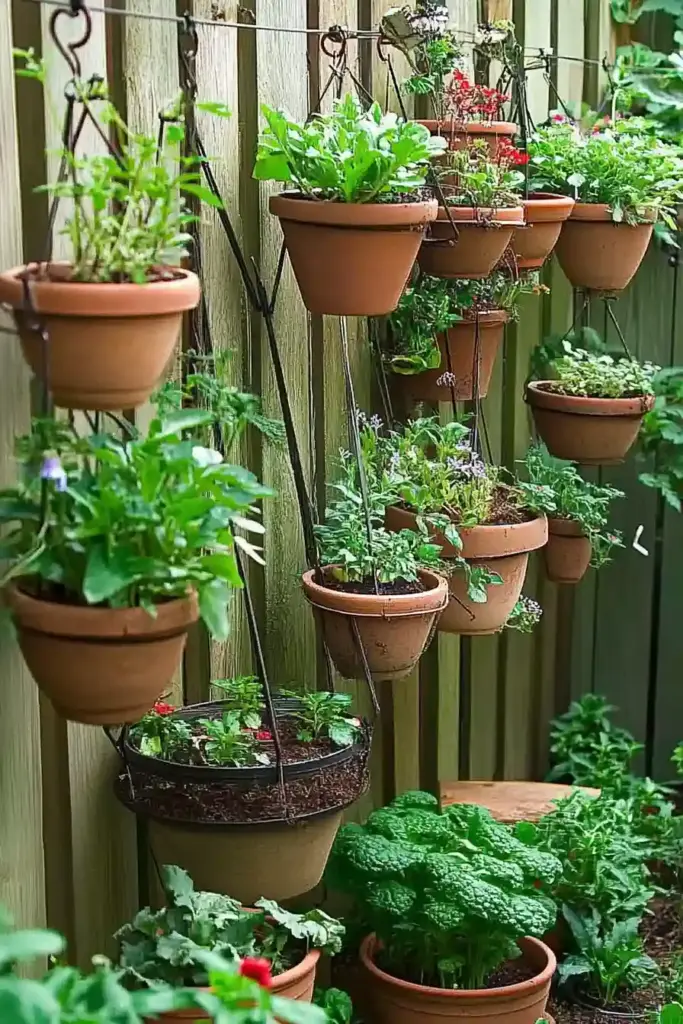
Short on ground space? Hanging planters are an excellent way to create a lush, layered garden without sacrificing square footage. This vertical garden layout works well for lightweight edibles like strawberries, herbs, and leaf lettuce.
Why it works:
- Keeps plants out of reach of pests like rabbits
- Makes harvesting easier—no bending required!
- Adds vertical interest to patios, balconies, or fences
Use sturdy hooks or wall-mounted planters to arrange your pots at varying heights. You’ll be amazed how much food you can grow in mid-air!
🪜 7. Repurpose a Ladder into a Tiered Garden

Old ladders can do more than sit in the garage—they make surprisingly stylish garden stands! A ladder garden layout is perfect for decks or small patios, offering tiered levels for growing herbs, compact veggies, or flowers.
Layout tips:
- Place heavier pots on the lower rungs for stability
- Mix in trailing herbs like oregano or thyme for a cascading effect
- Use each step as a mini shelf for creative plant displays
This layout not only saves space but adds a rustic-chic vibe to your outdoor setup.
🌸 8. Interplant Vegetables with Flowers

Blending beauty with function, interplanting vegetables and flowers is a clever way to enhance both your harvest and your garden’s curb appeal. Many flowers pull double duty: attracting pollinators while repelling pests.
Great combos to try:
- Swiss chard with calendula
- Tomatoes surrounded by marigolds
- Nasturtiums nestled among cucumbers
This integrated approach also boosts biodiversity and turns your garden into a pollinator paradise.
📏 9. Stick with Classic Row Planting

For a clean, traditional look that makes weeding and harvesting simple, you can’t go wrong with tidy planting rows. This layout works especially well in larger gardens where uniformity and crop rotation are key.
How to do it right:
- Group similar crops by growing season (e.g., spring greens in one row, summer squash in another)
- Allow space between rows for airflow and easy access
- Use mulch between rows to suppress weeds and retain moisture
It may be old-school, but row planting still delivers when it comes to order and productivity.
🌿 10. Grow Up with Trellises and Climbing Crops
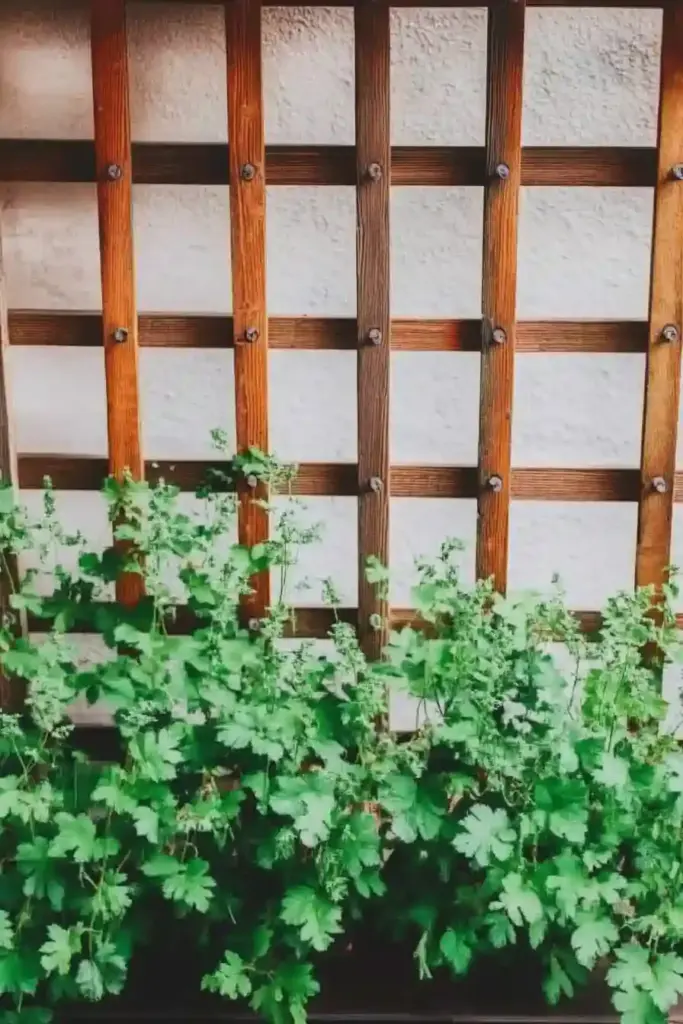
Some of the most productive gardens grow up, not out. Incorporating trellises into your layout supports vining veggies like cucumbers, pole beans, peas, and squash—keeping them off the ground and saving serious space.
Benefits of vertical gardening:
- Reduces disease by improving airflow
- Keeps fruit cleaner and easier to harvest
- Adds a decorative element to garden beds
You can use wood frames, metal arches, or repurposed items like ladders or fencing. It’s an easy win for both space and yield.
🪴 11. Use Pots for Portable Gardening
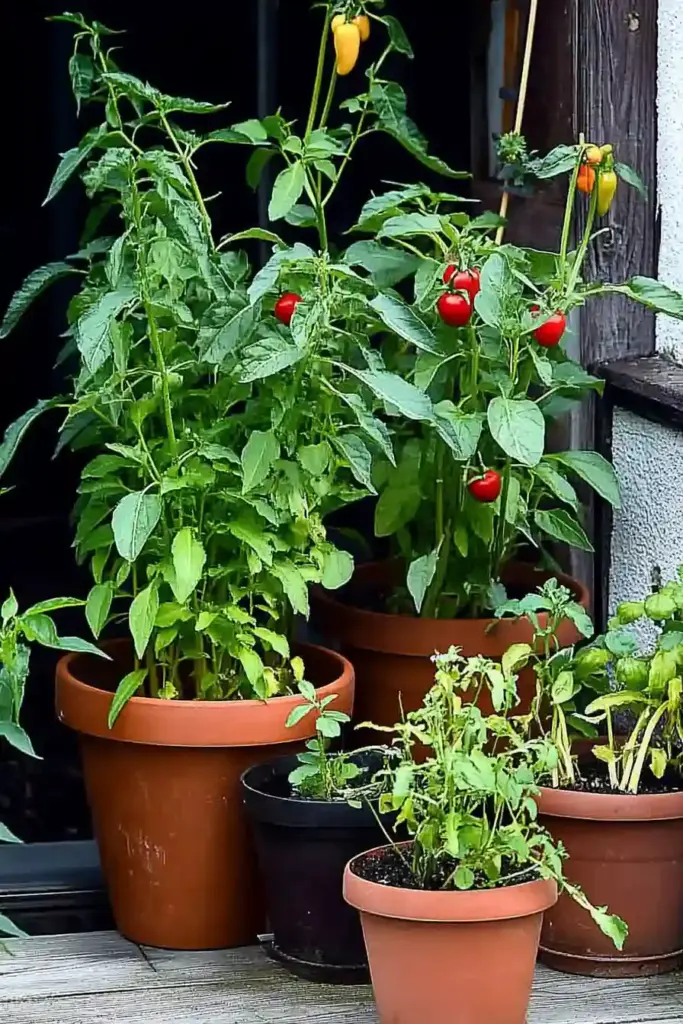
Container gardening isn’t just for flowers—vegetable gardening in pots is a flexible and efficient layout for small spaces or renters. Whether arranged on a patio, porch, or even front steps, pots let you control soil quality and move plants as needed for sunlight.
Why it’s effective:
- Perfect for customizing growing conditions
- Reduces weed growth
- Makes it easy to rearrange or redecorate
Be sure to select pots with good drainage and group plants with similar watering needs together. Tomatoes, peppers, lettuce, and herbs are all excellent choices for containers.
🌼 12. Try Companion Planting for a Healthier Garden
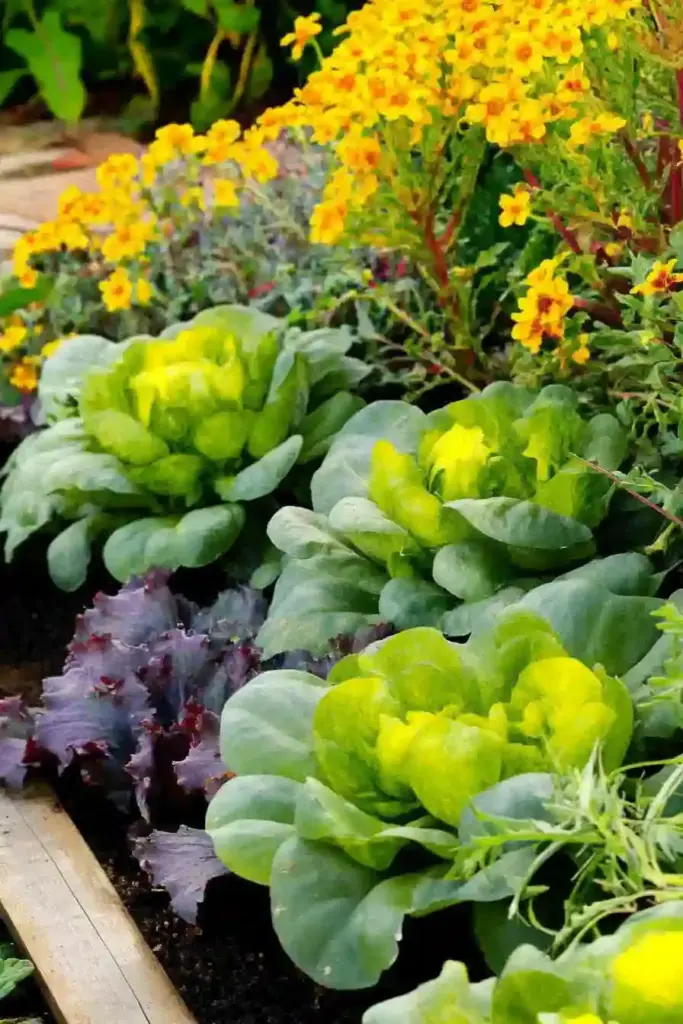
Companion planting is more than just clever—it’s a natural way to help your veggies thrive. This layout technique involves grouping plants that benefit each other when grown side by side, such as repelling pests or boosting flavor.
Popular pairings:
- Basil with tomatoes (enhances flavor and repels insects)
- Carrots with onions (deterrent to carrot flies)
- Cabbage with marigolds (discourages cabbage moths)
Companion planting adds a strategic layer to your layout that supports long-term garden health while reducing the need for chemical intervention.
📦 13. Construct Raised Garden Beds
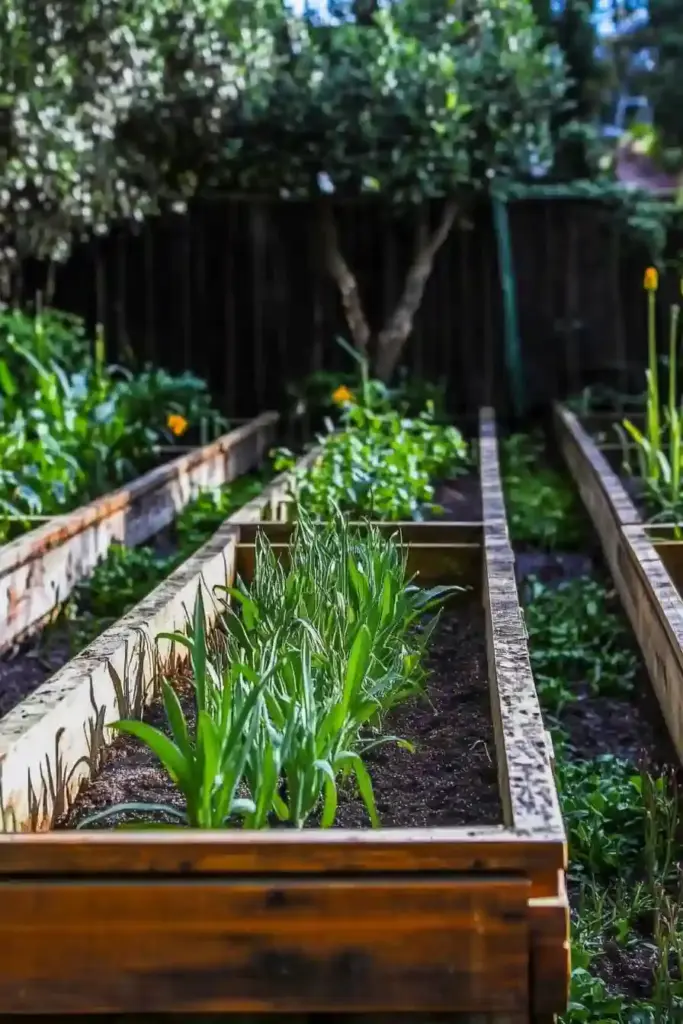
Raised beds remain one of the most popular and beginner-friendly vegetable garden layouts. These enclosed garden boxes allow you to control soil quality, reduce compaction, and make gardening easier on the back and knees.
Perks of raised beds:
- Great for poor or compacted soil areas
- Extend the growing season (they warm up faster in spring)
- Defined layout keeps everything neat and contained
You can build beds from untreated wood, bricks, or recycled materials—just ensure proper drainage and depth based on what you’re planting.
🌿 14. Install a Gutter or Vertical Rail Garden
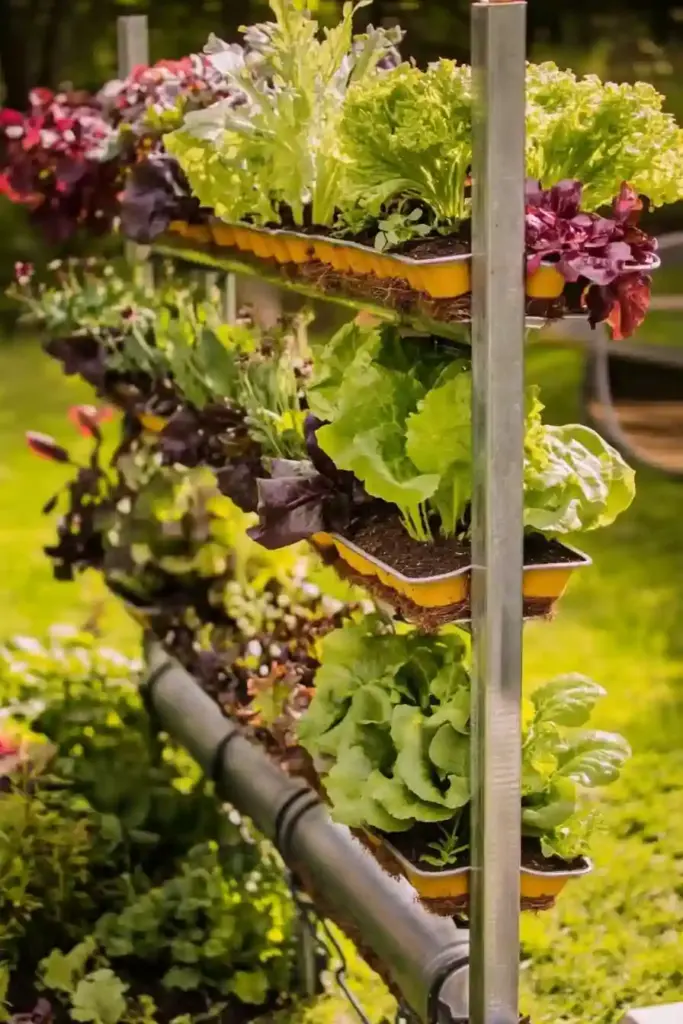
Looking to go even more vertical? A gutter garden or rail-mounted layout is ideal for shallow-rooted crops like lettuce, spinach, or herbs. Mounted on a fence, railing, or wooden frame, this design makes use of every inch of vertical space.
How to make it work:
- Drill drainage holes in the bottom of gutters or long planters
- Space rails or containers to ensure airflow and light
- Water consistently, as vertical setups can dry out quickly
It’s a creative solution for tight spaces—and adds a modern touch to your garden design.
🌞 15. Grow a Windowsill Herb Garden
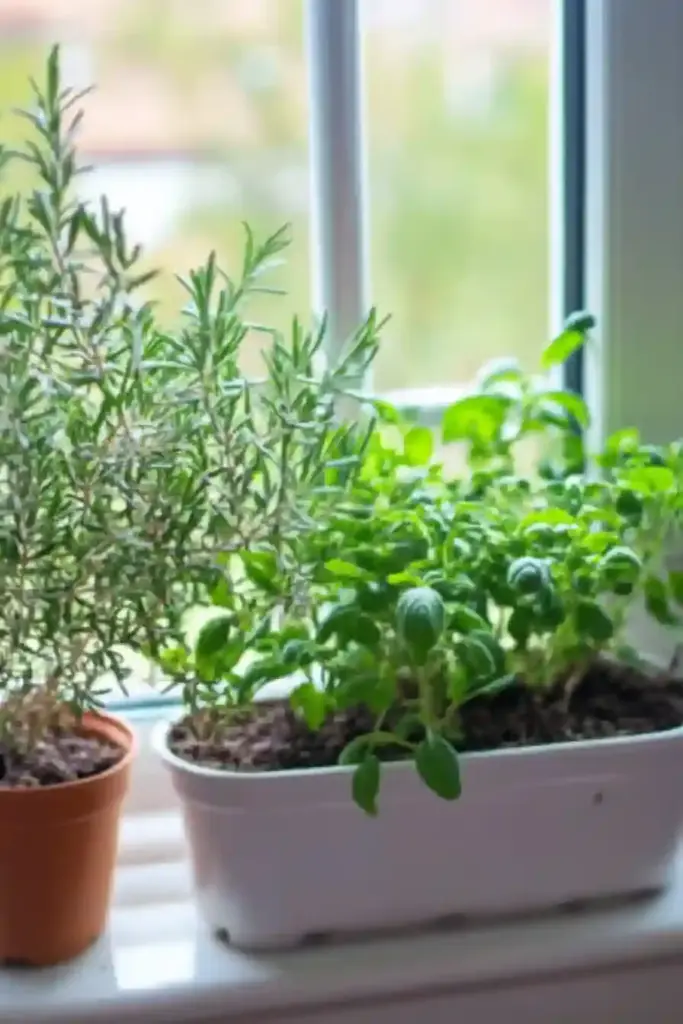
Don’t have outdoor space? No problem. A windowsill garden lets you enjoy fresh herbs and greens year-round right from your kitchen. It’s one of the easiest entry points for new gardeners and perfect for apartment dwellers.
Ideal herbs for windowsills:
- Basil
- Mint
- Thyme
- Chives
- Parsley
Make sure your window gets at least 6 hours of sunlight per day and rotate the pots every few days for even growth.
🧱 16. Mount a Wall Garden with Shelves or Pallets

Turn any vertical surface into a lush growing space by creating a wall garden. Using repurposed pallets, floating shelves, or hanging planters, you can grow shallow-rooted vegetables like arugula, lettuce, or herbs right against a fence or exterior wall.
Why it works:
- Frees up ground space
- Keeps edibles out of reach of pests
- Adds modern, eye-catching design to your yard
It’s a fantastic option for those who want both style and function—especially on patios or balconies.
👟 17. Fill a Pocket Garden with Leafy Greens
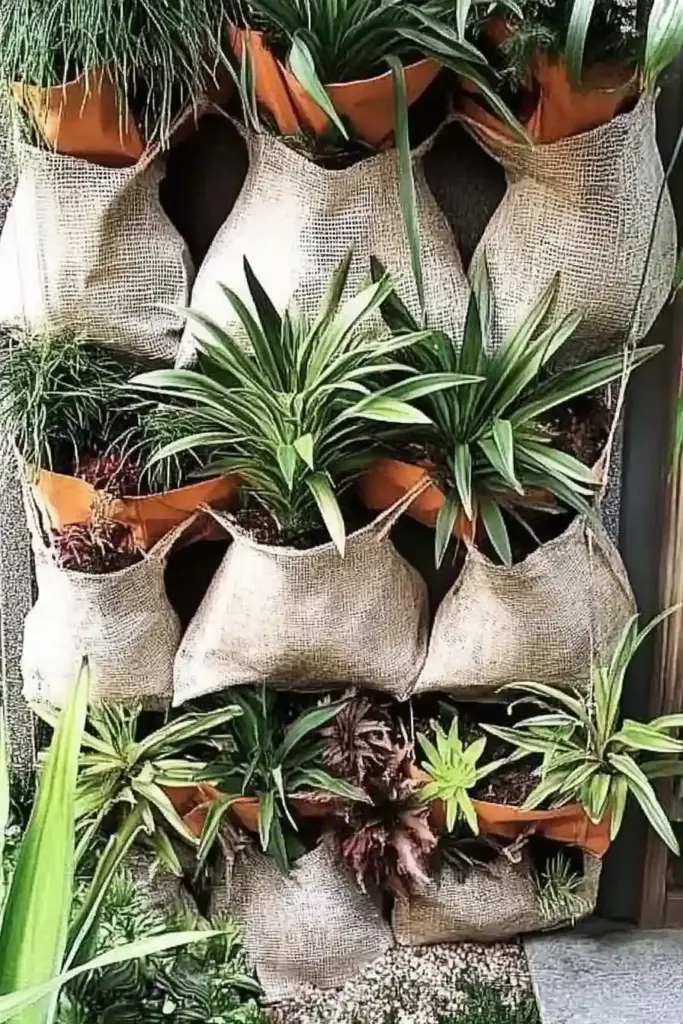
A pocket garden, often made using hanging shoe organizers or fabric wall planters, is one of the most budget-friendly and space-efficient ideas. These are ideal for leafy crops and herbs with shallow roots.
Tips for success:
- Make sure the material drains well (poke holes if necessary)
- Mount in a spot with plenty of sun
- Water often—small pockets dry quickly!
It’s a fun DIY project that turns vertical surfaces into lush, edible tapestries.
🐄 18. Use Stock Tanks for Raised Garden Beds
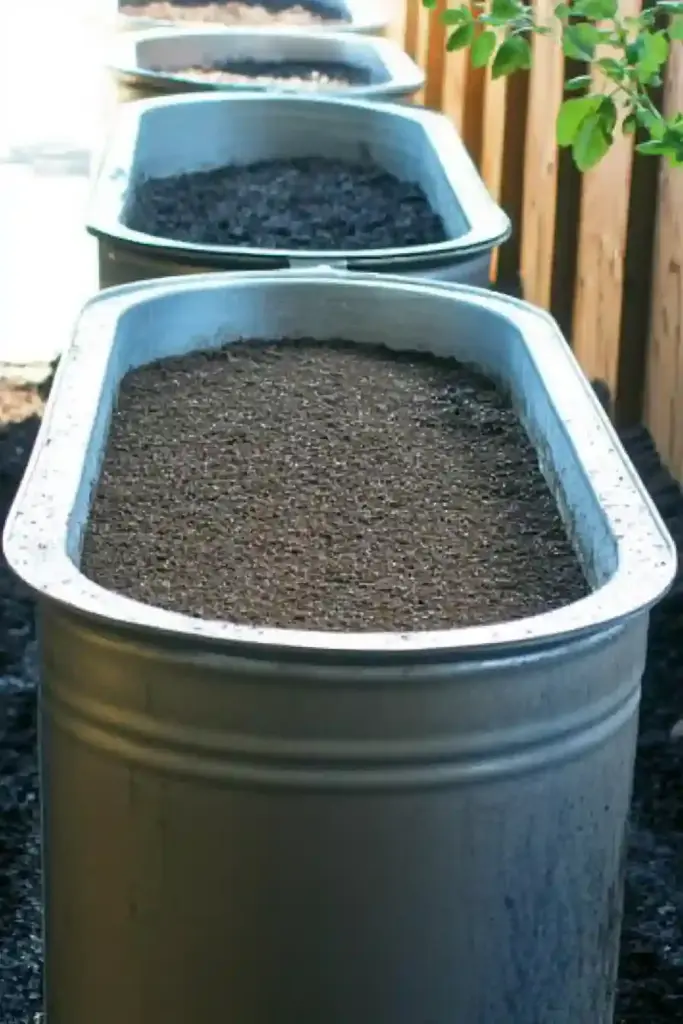
Looking for something sturdy and farmhouse-chic? Stock tank gardens are trending for a reason. These large, galvanized metal containers offer great drainage, durability, and height—perfect for gardeners with back issues or compact spaces.
Key benefits:
- Practically indestructible
- Great for deep-rooted veggies
- Adds visual structure to your yard
Drill holes in the bottom for drainage or use bottomless tanks over prepared soil. Either way, they’re a stylish and functional choice.
🪟 19. Add Window Boxes for Beauty and Convenience
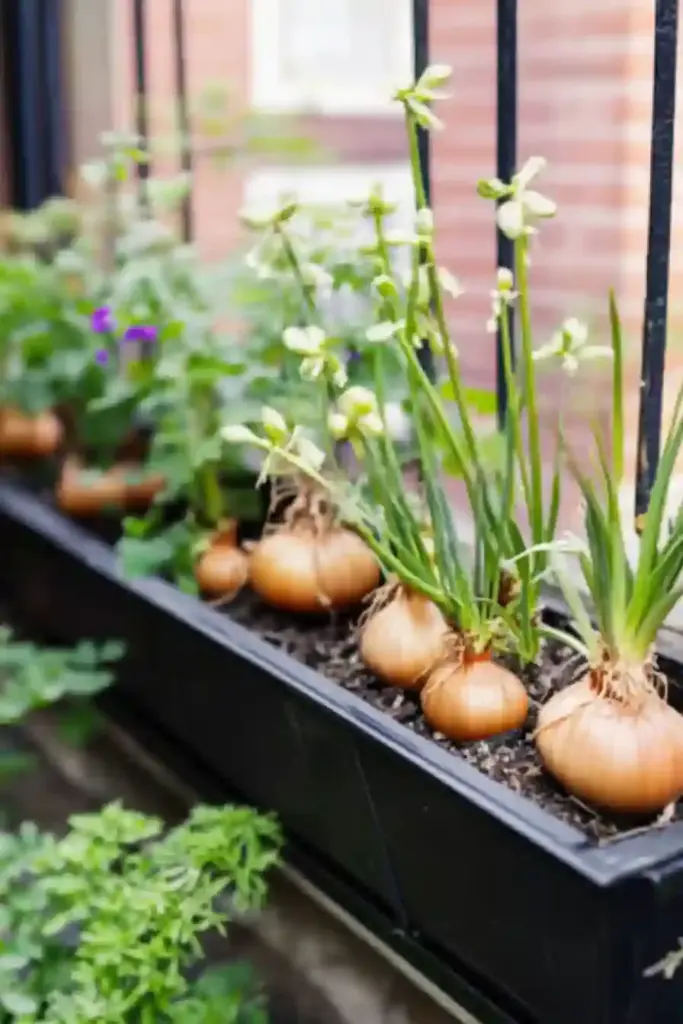
Window boxes aren’t just decorative—they’re also incredibly practical for growing herbs, cherry tomatoes, or small greens right where you need them. Whether mounted outside kitchen windows or along deck railings, this layout adds a pop of green and boosts your harvest.
Why gardeners love them:
- Easy access for daily harvesting
- Enhances curb appeal
- Ideal for small or urban homes
Plus, you can rotate seasonal crops to keep your boxes fresh and full throughout the year.
🥬 20. Plant Shallow Containers for Cut-and-Come-Again Greens
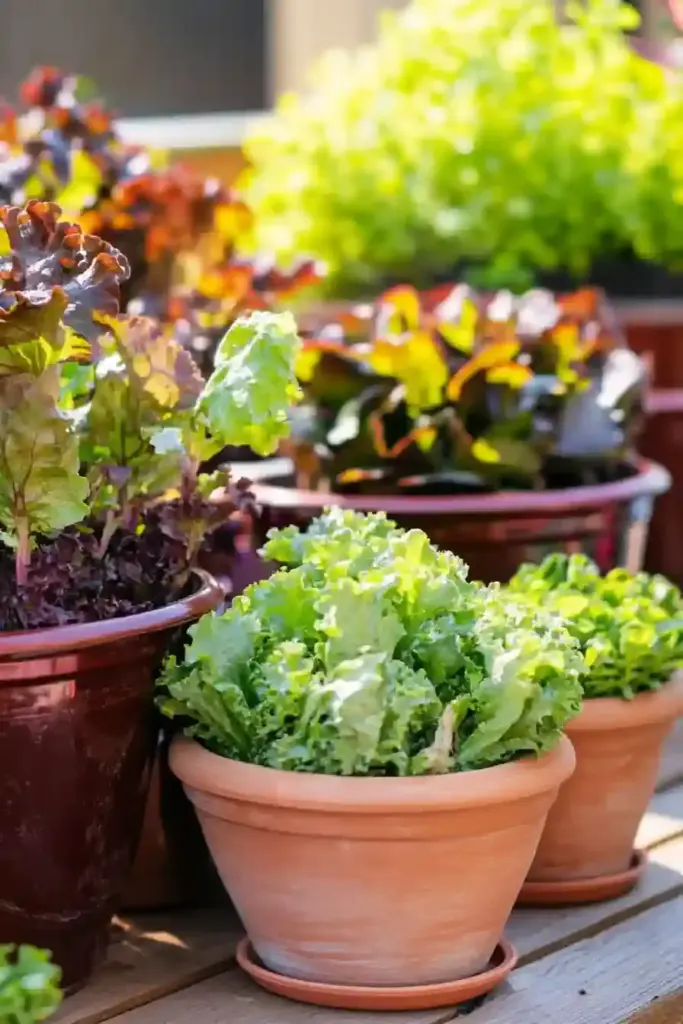
For fresh salad all season long, try a shallow container garden layout focused on leafy greens. Use low, wide planters filled with fast-growing lettuces, spinach, or arugula—and harvest as needed.
How to keep the harvest going:
- Sow seeds every two weeks for staggered crops
- Snip leaves rather than pulling the whole plant
- Choose cut-and-come-again varieties for continuous growth
Place your containers where they’ll get morning sun and a little afternoon shade to keep the greens crisp and tender.
🌿 Final Thoughts: Design Your Dream Garden, One Layout at a Time
Whether you’re a beginner with a balcony or an experienced grower with a backyard plot, the right vegetable garden layout ideas can turn your space into a productive, beautiful, and deeply satisfying retreat.
From vertical gardens and raised beds to compact containers and creative companion planting, there’s a layout here to inspire every kind of gardener. The key is to start small, experiment, and let your garden grow with you.
Happy planting—and may your harvest be plentiful!

